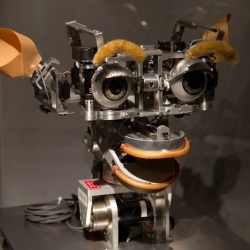
Facebook users upload 350 million photos onto the social network every day, far beyond the ability of human beings to comprehensively look at, much less analyze.
And so that’s one big reason the company just hired New York University (NYU) machine learning expert Yann LeCun, an eminent practitioner of an artificial intelligence (AI) technique known as “deep learning.” As director of Facebook’s new AI laboratory, LeCun will stay on at NYU part time, while working from a new Facebook facility on Astor Place in New York City.
“Yann LeCun’s move will be an exciting step both for machine learning and for Facebook, which has a lot of unique social data,” says Andrew Ng, who directs the Stanford Artifical Intelligence Laboratory and who led a deep-learning project to analyze YouTube video for Google.
“Machine learning is already used in hundreds of places throughout Facebook, ranging from photo tagging to ranking articles to your newsfeed. Better machine learning will be able to help improve all of these features, as well as help Facebook create new applications that none of us have dreamed of yet.” What might those futuristic advances be? Facebook did not reply to repeated requests for comment.
Aaron Hertzman, a research scientist at Adobe whose specialties include computer vision and machine learning, says that Facebook might want to use machine learning to see what content makes users stick around the longest. And he thinks cutting-edge deep learning algorithms could also be useful in gleaning data from Facebook’s massive trove of photos, which numbers roughly 250 billion.
“If you post a picture of yourself skiing, Facebook doesn’t know what’s going on unless you tag it,” Hertzmann says. “The dream of AI is to build full knowledge of the world and know everything that is going on.”
To try to draw intelligent conclusions from the terabytes of data that users freely give to Facebook every day, LeCun will apply his 25 years of experience refining the artificial intelligence technique known as “deep learning,” which loosely simulates the step-by- step, hierarchical learning process of the brain.
Applied to the problem of identifying objects in a photo, LeCun’s deep learning approach emulates the visual cortex, the part of the brain to which our retina sends visual data for analysis.
